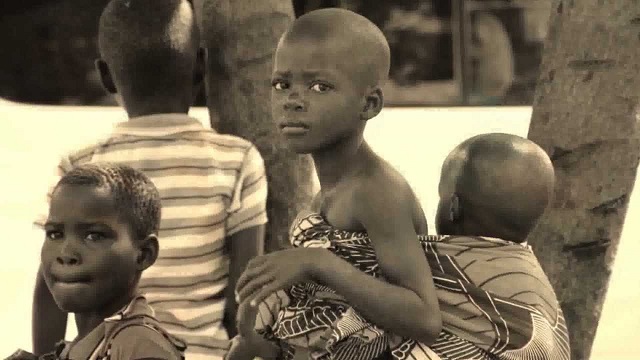
Kampala, Uganda | THE INDEPENDENT | The Kampala Capital City Authority-KCCA has finalized the process to operationalize the Child protection Ordinance, 2022. KCCA drafted and approved the ordinance in May 2019, but it spent a considerable amount of time in the Attorney General’s Chambers for perusal to ensure it is in sync with other laws including the Supreme Law of the Land.
The Attorney General approved the ordinance this year. The Ordinance prohibits acts that encourage children to stay on the street such as giving them food, money, and clothing. Anybody who contravenes the law will be imprisoned for six months or pay a fine of two currency points. A currency point is equivalent to 20,000 Shillings.
KCCA under clause 11 of the Ordinance shall have the duty to rescue children whose rights are being abused through begging on the streets. “Any infant used for or child found begging or soliciting for alms, shall be rescued and committed to the custody and the care of the probation and social welfare officer,” reads the ordinance in part.
The City Lord Mayor Erias Lukwago is hopeful that the law shall address the challenge of children on the streets and rescue children who are trafficked by their parents and other ruthless individuals to the streets to beg.
But as children are rescued, Lukwago wants the government to also fast-track the establishment of the National Rehabilitation Centre since Kampiringisa is almost moribund and yet the Koblin Centre in Napak district where the street children picked from Kampala are being taken lacks capacity.
Section 96 of the Children Act mandates the Central Government to establish a National Rehabilitation Centre for Children. He further voiced the need for functional remand centers for children given the fact that the existing ones are struggling due to limited funding.
John Paul Kodet, the LC5 chairman of Napak district says the law shall help in dealing with the problem of children on the street. He called for the immediate expansion of Koblin Youth Rehabilitation Center. The facility where children rescued from the streets are taken can only hold a maximum of 80 children yet there are sometimes over 100 children in need of rehabilitation.
Faith Kembabazi, the Executive Director of Children at Risk Action Network-CRANE, an umbrella organization of individual organizations dealing in child protection and promotion of children’s rights says that the Ordinance is a good move.
She says that while the majority of the children are trafficked to the roads, local governments in different areas where these children are taken from and where they are taken should be at the forefront of fighting the vice. Kembabazi says as civil society, they are working with local governments to formulate ordinances intended to deal with child trafficking, child labor, and any form of child protection.
“The local government in Napak should have laws to deal with parents and other individuals who ferry children to Kampala to stay on the streets. A person on a bus carrying a child should be able to identify themselves and the children and the reason for travel,” says Kembabazi.
She however adds that despite the existence of the law, implementation of the same like others already in existence shall be constrained if the budget for social work is not increased by the government. Kembabazi says in their line of work, they have observed how social workers at local governments struggle to deal with child protection matters because they lack transportation and the necessary facilitation to move around to do their work.
“You’ll find that the police have rescued a child but don’t have money to transport them to their home. They sometimes contact us for help and we intervene where we can,” said Kembabazi before identifying another challenge, which is poverty.
She says that while addressing any challenges, we ought to look at both the push and pull factors. The immediate pull factor here for children on the streets is that there are people who are willing to share a coin with them. However, the push factor, which is the biggest challenge is poverty. The lack of employment, food,, and a means to sustain a life prompts some parents to take their children to the streets to beg.
Karamoja sub-region where the majority of the children on the streets are said to come from is one of the poorest regions in Uganda. According to the 2019/2020 Uganda National Bureau of Statistics, Karamoja’s income poverty stands at 66 percent, having risen from 61 percent in 2017 while food poverty (leading to food insecurity) is at 75 percent up from 70 percent in 2017.
Kembabazi says that government should enhance its poverty alleviation programs in such areas as a more effective measure to bar parents from taking their children to the streets or giving them away to traffickers with the hope of getting some money.
On his part, Godfrey Kakande, the chairman of the Kakajjo zone where many of these children and their families retire after a long day on the street, says that there is a group of people who traffic the children to Kampala and this should be dealt with to address the problem.
He thinks that many of the dealers in child trafficking to Kampala are government officials or connected to authorities involved in operations intended to get children off the streets. This is because he says, many times an operation is conducted,, and children are said to be taken to rehabilitation centers but only for these children to return that night or after a month.
Some leaders have held that the penalty for traffickers of children and those who encourage them to stay on the streets is almost insignificant and may not bar culprits from engaging in the act. However, that’s the limit under which an ordinance can operate. Nevertheless, KCCA says the authority shall continue implementing programs to rescue children.
The Acting Deputy Director of Gender and Production Godwin Gumisiriza told a meeting in June that while there is a lot to be done to clear Kampala streets, KCCA is committed to making sure people are aware of this law as they enforce it. Apart from the prohibition of acts that encourage children to remain on the streets, loitering, prohibition of begging or soliciting and rescue of children found begging or soliciting the Ordinance also prohibits hazardous employment, sale of alcohol and narcotics to children, prohibition of sexual exploitation, video halls, gaming halls and bars, leasing or renting houses to children, an act which have contributed to the ever-increasing number of street kids on our streets.
*****
URN
 The Independent Uganda: You get the Truth we Pay the Price
The Independent Uganda: You get the Truth we Pay the Price


